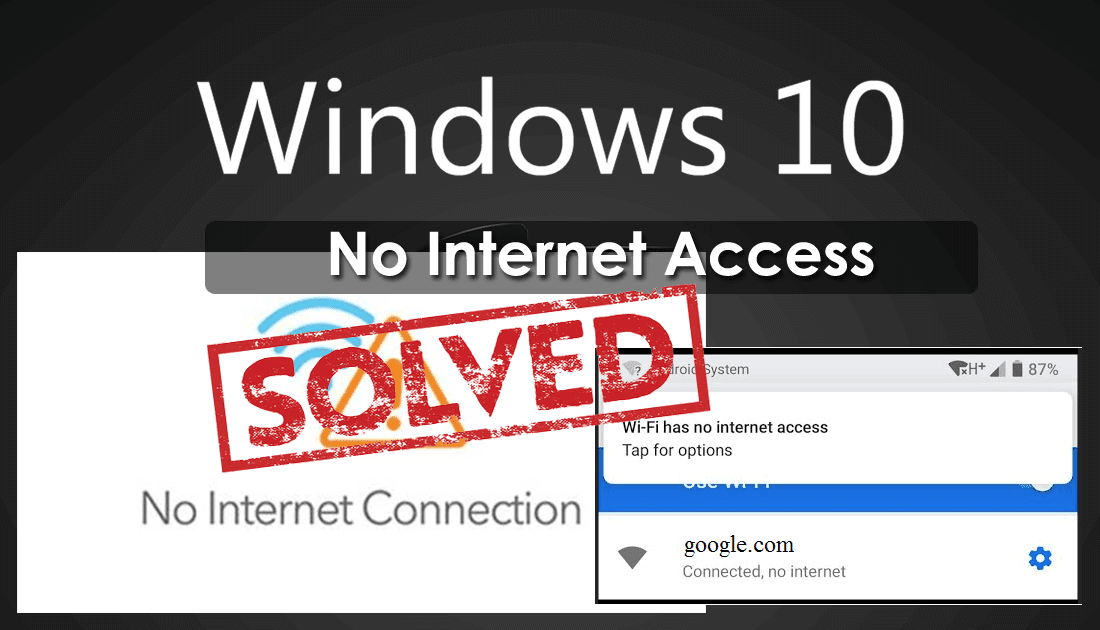Fix Ethernet Not Working in Windows 10: If you can’t connect to the internet using an Ethernet cable, you’ll need to troubleshoot the problem. You’ll notice that the PC doesn’t recognize the Ethernet connection if you open the Network and Sharing Center.
However, if you try to access the internet while connected to WiFi with the same connection, you will be able to do so, indicating that the problem Ethernet Not Working in Windows 10 could be caused by incorrect network configuration, corrupt or outdated network drivers, a damaged or faulty Ethernet cable, or other hardware issues.
Users who prefer Ethernet over WiFi are experiencing a major setback as a result of this problem, as they are unable to connect to the Internet via Ethernet cable. Ethernet not working in Windows 10 is a common problem for those who have updated or upgraded to Windows 10.
Thankfully, there are numerous fixes available that appear to resolve this issue. So, without wasting any time, let’s see how to fix Ethernet not working in Windows 10 using the troubleshooting guide listed below.
What does it mean when Ethernet isn’t working in Windows 10?
If you have faced the Ethernet not working in Windows 10 issue for the first time, you may want to know more about it. Generally, if you are experiencing the Ethernet not working in Windows 10, you will completely lose access to a given network. This means that you will not be connected to the internet or even be able to access other devices on your local network. Even if you have a functional Ethernet cable for your networking needs, it may show that the network cable is unplugged in some cases.
What to Do If Ethernet Doesn’t Work in Windows 10?
Because losing access to your network and the internet can be quite frustrating, it is quite important to fix Ethernet not working in Windows 10. However, such an issue can be caused for a possible number of reasons. Hence, we are here with multiple solutions and fixes regarding this Ethernet issue.
Ethernet Not Working in Windows 10 [SOLVED]
Make sure to create a restore point just in case something goes wrong. You can simply go through the following methods one by one to fix Ethernet not working in Windows 10:
Try connecting the Ethernet cable to another port on the router, as chances are the particular port might be damaged.
- Try to use another cable, as the cable itself might be damaged.
- Try to unplug the cable, then reconnect it.
- Try connecting the Ethernet to another PC to see if the problem is resolved.
If the ethernet works on the other PC, then your PC’s hardware might be damaged and you need to send it for repair.
Method 1: Run the Network Troubleshooter
1. Press Windows Key + I to open Settings, then click on Update & Security.
2. From the left-hand menu, select Troubleshoot.
3. Under Troubleshoot, click on Internet Connections and then click Run the Troubleshooter.
4. Follow further on-screen instructions to run the troubleshooter.
5. Reboot your PC to save changes.
Method 2: Reset the Ethernet Adapter
1. Press Windows Key + I to open Settings, then click on the Network & Internet icon.
2. Select Status from the left-hand menu.
3. Now, go down to the bottom of the Status page and click the Network Reset link.
4. Click the “Reset now” button on the Network Reset screen.
5. Try connecting the Ethernet to the PC again to see if you can fix the Ethernet not working in Windows 10.
Method 3: Install New Drivers and Enable the Ethernet Device
1. To launch Device Manager, use Windows Key + R, then type in devmgmt.msc and press Enter.
2. Right-click on your Ethernet device and select Enable after expanding Network Adapters.
If it’s already turned on, you may skip this step.
3. Right-click it again and choose Update Driver.
4. Select “Automatically search for updated driver software” and allow it to install any new drivers that are found.
5. Reboot your computer to save your modifications and check whether Ethernet is still not working in Windows 10.
If not, go back to Device Manager and right-click on your Ethernet device, then pick Update Driver from the context menu.
7. Select “Browse my PC for driver software” this time.
8. Now select “Let me choose from a list of available drivers on my machine” from the drop-down menu.
9. Click Next after selecting the newest Realtek PCIe FE Family Controller driver.
10. Reboot your computer when the updated drivers have been installed.
Method 4: Activate the Ethernet Connection
1. To launch Network Connections, use Windows Key + R, then type ncpa.cpl and press Enter.
2. Right-click the Ethernet connection and pick Enable from the context menu.
3. Now that the Ethernet connection is enabled, try connecting to the Ethernet network again.
Method 5: Temporarily disable your antivirus or firewall
1. From the system tray, right-click on the antivirus program icon and select Disable.
2. After that, choose the time period for which the antivirus will be disabled.
Note: Pick the shortest length of time possible, such as 15 or 30 minutes.
3. After that, try to access the Internet again to see if the issue has gone away.
4. In Windows Search, type control and then select Control Panel from the list of results.
5. After that, go to System and Security and then to Windows Firewall.
6. From the left window pane, click Turn Windows Firewall on or off.
7. Restart your computer after selecting Turn off Windows Firewall.
Try connecting to the internet again to see if you can fix Ethernet not working on Windows 10. If the preceding technique does not work, please be sure to repeat the procedures to reactivate your firewall.
Method 6: Flush DNS and Reset TCP/IP
1. Right-click the Windows button and choose “Command Prompt (Admin)” from the context menu.
2. Now type the commands below, pressing Enter after each one.
- /release ipconfig
- /flushdns /ipconfig
- /renew ipconfig
3. Open the Admin Command Prompt once more and type the commands below, pressing enter after each one:
- netsh int ip reset ipconfig/flushdns nbtstat –r
- netsh winsock reset
- netsh winsock catalogue reload
- netsh int ipv4 reset reset.log
4. Reboot your computer to make the modifications take effect.
Ethernet Not Working in Windows 10 appears to be fixed by flushing DNS.
Method 7: Modify Ethernet’s Power Management Settings
1. To launch Device Manage, press Windows Key + R, then type devmgmt.msc and press Enter.
2. Right-click on your Ethernet device and select Properties after expanding Network Adapters.
3. In the Ethernet Properties window, go to the Power Management tab.
4. Uncheck the box that says “Allow the computer to turn off this device to save power.”
5. Click Apply and then OK.
6. Reboot your computer to apply the changes.
Method 8: Use Google DNS
1. Click Network and Internet in the Control Panel.
2. After that, go to the Network and Sharing Center and select Change adapter settings.
Select your Wi-Fi network, then right-click on it and choose Properties.
4. Click Properties after selecting Internet Protocol Version 4 (TCP/IPv4).
5. Make a checkmark.
“Type the following DNS server addresses” and “Use the following DNS server addresses”
- 8.8.8.8 is the preferred DNS server.
- 8.8.4.4 is an alternative DNS server.
6. Close all programs and see if you can fix the Ethernet not working in Windows 10.
That’s it. You’ve successfully fixed Ethernet not working in Windows 10. Nevertheless, if you have any further questions, please leave them in the comments below.




